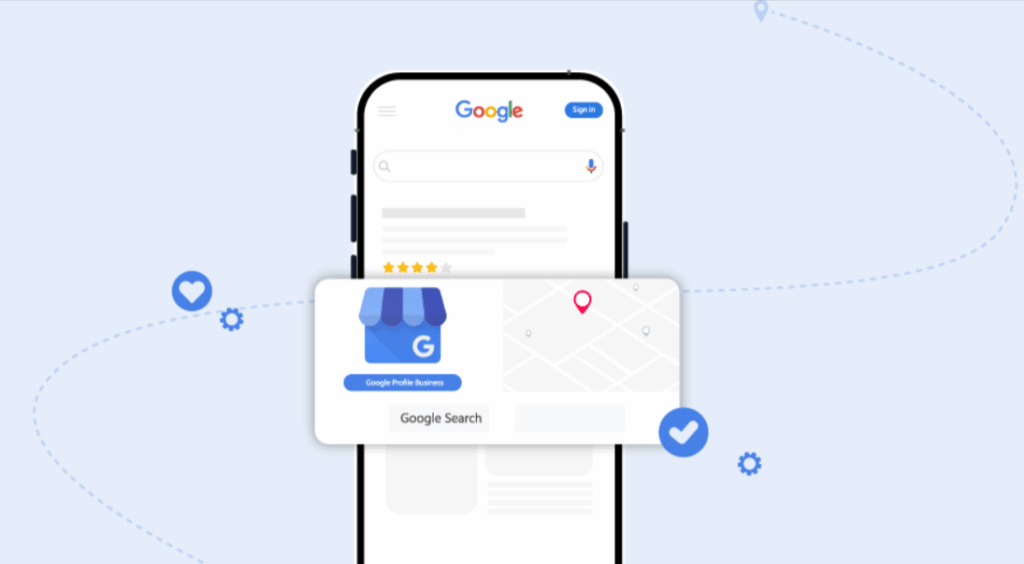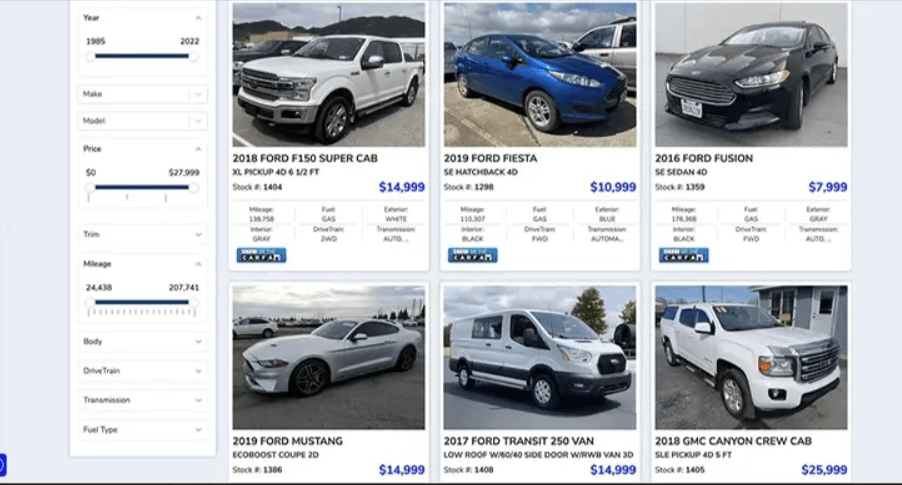The American automotive market sells more than 13 million new vehicles every year, with thousands of dealerships competing for the attention of customers, both online and offline. While some large dealership networks were controlling a significant share of sales, consumers still researched extensively on Google before actually entering a showroom.
Changes in consumer behavior imply that any dealership coming on top in searches gains a serious advantage. Automotive SEO will enhance the visibility of a website, thus sending more qualified traffic that will eventually convert into inquiries for test drives or sales appointments.
In this article, we will run through all Automotive SEO basics and six actionable strategies to help you outrank your competitors.
What is SEO for Automotive Industry?
Automotive SEO increases the visibility of a car dealership website on a search engine. The better it ranks in search results, the more likely people are to visit the website and eventually the showroom.
In late-stage consideration research, most car buyers begin with a research on Google. Thus, a dealer without an appearance on search results can lose potential buyers to rival dealers. Properly applied SEO methods will allow you to draw targeted traffic, generate leads, and help your sales perform much better. Search engine determines ranking according to attributes like relevance, trustworthiness, and overall website experience.
The Benefits of SEO for Automotive Business
SEO, being of utmost importance, can give the advantage to a car dealership. It serves as a way to get the car business noticed in an already crowded marketplace and guarantees potential customers can find it online.
1) Higher Search Visibility and More Traffic
Now, typically car buyers initiate their search on the Internet-to check the models, prices, and dealers in their localities. Should your website rank high on Google, these buyers will be in your hands, and competitors will not get them. Automotive SEO means ordering your pages for relevant searches, driving steady traffic to your website, and increasing brand visibility.
Key benefits include:
- Higher impressions for searches based on intent, where buyers are ready to act.
- Organic traffic without the need for ongoing ad spend, so you have constant visibility at lower costs.
- Better click-through rates since customers usually trust sites that rank at the top of Search Engine Result Pages.
- Traffic growth for multiple car models and trims, thus allowing the reach to expand without any extra ad campaign.
- Repeated search visibility grows brand familiarity over time, helping create trust for local shoppers.
2) Strong Local Presence and Foot Traffic
Car dealerships rely strongly on nearby customers, which makes local SEO a crucial factor. Being listed on Google Maps or even on the “near me” results means more calls, foot traffic, and test drive bookings. By optimizing your local listings and getting more local reviews, you can attract buyers in close proximity who are ready to buy.
Key benefits include:
- Greater visibility in Google´s local 3-Pack, receiving most calls and clicks from local dealers.
- More phone calls and direction requests, converting online searches into showroom visits.
- Positive reviews working as trust-building signals, encouraging buyers to be more confident in choosing your dealership.
- Accurate business information, making sure a customer will never see outdated phone numbers or hours.
- Local SEO gives small dealers a fair chance to rank alongside larger competitors.
3) Cost-Effective Customer Acquisition
Traditional ads do not work once the money runs dry, but SEO continues to churn out traffic and leads over time. This investment in optimization really help reduce the cost per lead while establishing a more sustainable growth. It is therefore a longer-term effort with accumulated dividends as rankings improve and visibility compounds.
Key benefits include:
- Less paid advertising results in a leaner marketing campaign, yet organic channels still procure high-quality leads.
- Lower cost per acquisition since organic searches yield clients without any pay-per-click fees.
- Higher ROI than print ads, billboards, or other PPC campaigns, making it the most-efficient channel.
- Evergreen pages-electronics-guinea-finance/trade-in guide-so they continue attracting visitors all year long.
- Results that keep coming even during slow sales periods, keeping a pipeline running while ad budgets dwindle.
4) Enhanced User Experience That Converts
If you have a fast mobile-friendly website with an intuitive design, customers would be engaged and find it easy to book test drives or contact your team. A better experience is just as good for search engines and for car shoppers.
Key benefits include:
- Fast-loading pages that bring down bounce rates, such that users do not exit before having a glance at the inventory.
- Mobile optimization having design that lets customers researching on their phones for cars to walk through research smoothly.
- Simple navigation and filtering to specify that the buyers are locating a specific model or service quickly.
- Clear internal linking, strong semi-structured content help google best index pages.
- Layouts that are focussed on conversion, making it easy to find and use calls, forms, and booking options.
5) Authority, Trust, and Brand Preference
Consumers want confirmation that they are going to make the right choice among dealers. SEO builds trust by promoting beneficial content like model comparisons, financing tips, and maintenance advice. The more your dealer is seen as the expert, the more customers will opt for your company.
Key benefits include:
- Authoritative content responding to buyer questions, taking them from researching to purchase decisions.
- High rankings; the higher up the search awards a dealership, the more trustworthy customers find it.
- Backlinks from local sites and automobile blogs-that generate more traffic with a host of competing domestic and foreign rivals.
- Content for every stage of the funnel-from early research to finished purchase intent.
- From here, an amplified online reputation will lead to quicker decision-making and numerous term deals on the floor.
6 Effective Approaches to Improve Your Automotive SEO
Now that you know what automotive SEO means and why it is significant for your dealership, let’s discuss the literally proven ways that can grasp some attention for your dealership. These work in various ways—some methods suit beginners, but others really need tech skills and deep knowledge to be performed correctly. Consider professional support if you want to ensure optimal results.
1) Optimize Local SEO & Google Business Profile

Car buyers usually look for dealers to test drive near them or find a center to service their cars. With this kind of SEO, your dealer shows up in Maps and other local search results thanks to yet-to-be-aligned business listings, local pages, and location signals with how customers search. Strong local visibility transforms online searches into calls, directions, and showroom visits.
What to do :
- Creating a consistent NAP (name, address, phone) throughout your website, Google Business profile, and main directories will prevent confusion and passing leads.
- Fill out your Google Business Profile with every field that applies, such as categories, services, hours, photos, etc., and provide URLs with UTM tags to measure GBP traffic.
- Keep creating updates for GBP (new arrivals, promotions, service offers) and respond to reviews promptly to increase engagement and relevance.
- Create hyper-local landing pages around neighborhoods, suburbs, and “near me” queries based on the actual search phrases users apply.
- Set up citations for your business on trustworthy local websites (Chamber of Commerce, local news, directories) to further enhance your location authority.
2) Optimize Vehicle Detail Pages (VDPs) & Inventory Structure

VDPs are your paramount conversion pages, so treat them just like ecommerce product pages. A clear and unique description, along with properly structured data and direct CTAs, will help convert organic visitors into test-drive bookings or leads. Proper inventory taxonomy enables search engines to index and surface vehicles by make, trim, year, and price.
What to do :
- Using keywords, create smaller descriptions of each car that mention make, model, year, trim, mileage, and primary selling features. Avoid using descriptions provided by the manufacturer.
- Add structured data (Product, Vehicle, Offer) to the VDPs to allow rich snippets and availability to be shown in SERPs.
- Create nicely formed URLs that have SEO value and maintain internal linking to all VDPs from SRPs, category pages, and blog posts.
- Conversion CTAs (book test drive, request quote, call now) should be placed above the fold as well as in the page flow to keep conversions from friction.
- Inventory updates: promptly remove sold units, immediately put up the arrival of new ones, and employ canonical tags for near-duplicate listings.
3) Fix Technical SEO & Improve Site Performance
Search engines truly love sites that load fast, that are crawlable, and also care so much about mobile-first aesthetics. So technical SEO is about eliminating the indexing concerns, while bettering the user experience, both to the final effect of ranking and conversion.
What to do :
- Core Web Vitals should be at the center of attention, along with crawlability and substantive treatment of faceted search, ensuring important pages are found and ranked for.
- Conduct periodic audits to locate and address crawl errors, sitemap dysfunctions, and incorrect blocks by robots.txt on key pages or directories.
- Increase Core Web Vitals implementation by heavy image optimizations, lazy-loading media, and reducing render-blocking resources to fast-track LCP and INP.
- Implement a mobile-first responsive design with tap-friendly CTAs to chart the same path as most car shoppers take while searching on the phone.
- Fix canonicalization and pagination on filter-driven SRPs to tackle duplicate-content thrift and link equity losses.
- Track Search Console and log-file data to identify indexing anomalies and technical fixes by impact.
4) Build a Practical Content Strategy & Keyword Mapping
Content helps you rank for informational queries and supports the entire buyer journey. Keyword mapping to the relevant page types—SRP, VDP, service, and finance—ensures that every piece of content is intent-driven. Quality content also reperesents the backbone of internal linking, local pages, and resources that gain links and help shoppers.
What to do :
- Develop a keyword matrix that assigns intent (transactional, navigational, informational) to site page and content topic.
- Produce evergreen guides (e.g., financing, trade-in, model comparisons) that sufficiently answer buyer questions and gain links over time.
- Optimize IOS elements: title, meta description, headings with location and intent modifiers (e.g., “buy used Honda Civic [city]”).
- Add FAQ and FAQ schema to service and finance pages to nab rich results and voice search queries.
- Repurpose top content into local landing pages, email drip sequences, and social posts so that the reach potential can further be increased along with internal linking value.
5) Manage Reviews, Backlinks & Online Reputation

Consider trust to be paramount when it comes to buying cars. Positive reviews, accurate local listings, and mentions from trusted sources help build broker credibility and support confident buyer choices. Actively collecting reviews, replying to them, and getting relevant backlinks will improve local rankings and domain authority while bringing in some referral leads.
What to do :
- Implement reviews collection workflows using post-sale emails, SMS, and QR codes to increase the number of reviews and review diversity.
- Keep it professional when responding to reviews and feedback, be them positive or negative-the idea is to demonstrate that you will promptly respond and build trust with other buyers.
- Obtain links through local press, sponsorships, guest publications, and partner websites-that is if those references may be used in a natural manner to mention your dealership.
- Use testimonials and third-party badges for review and case studies that lead to social proof during its greatest conversion times.
- Talk about reputation-based KPIs (average rating, review velocity, referral traffic) and present a link with conversion-based metrics in assessing its performance.
- The best-quality backlinks possibilities for a vehicle site are local news, auto manufacturers, industry magazines, partner organizations, and local outlets. Long-term link building focuses on building quality, relevant connections through genuine relationships, rather than relying on quick fixes.
6) Build High-Quality Backlinks
Backlinks from relevant authoritative sites send signals for search engines and help your dealership rank on the most competitive terms. The most desirable links for an auto website come from local news, manufacturers, industry publications, partner organizations, and community outlets. A long-term link-building process like that values quality, relevance, and relationships instead of shortcuts.
What to do :
- Create linkable assets, such as local market reports, original data (for inventory trends), buyer guides, and community sponsorship pages that other sites would want to reference.
- Pitching timely stories, press releases, or exclusive sets of data getting the dealership cast as a credible source is what local journalists and industry bloggers would demand.
- Would flour to sponsor or co-organize events with manufacturers, local businesses, schools, or charities that would generate authoritative backlinks?
- Offer guest posts for free to premiere automotive blogs and regional publications, with the provision that the content provide value and insight instead of overt selling. This should allow some natural citations and faint referral traffic.
- Keeping an eye on backlink profile and outreach opportunities, disavowing spammy links when appropriate, and then a little promotional aids thrown in through relevant social media sharing and email blasts for your earned mentions.
FAQs
What is Automotive SEO?
Automotive SEO refers to the optimization of car dealership or any automotive-related website so as to rank better in search engines like Google, to draw in more customers who are already actively searching online for vehicles, services, or dealerships.
Why SEO for Car Dealerships?
Readers pass through the concentric web before entering the showroom; this is a mandatory procedure for any car buyer. A nicely adjusted SEO machine shall make a dealership rank higher, show up in prominent searches, attract traffic to its site, along with inquiries and visits to the showroom.
How long does it take to see results from automotive SEO?
It is always considered a long-term game. Initial changes may slowly happen over months 3 to 6 depending on the level of competition and also the quality of the site. Yet, if done in the right way, the benefits keep on growing by continuous optimizations.
Can small local dealerships benefit from SEO?
Yes, local SEO usually works in favor of the smaller dealerships. It makes sure your business appears in local searches like “car dealers near me,” thereby helping to bring a stream of buyers in the local vicinity.
What content plays a role in automotive SEO?
Top-grade content such as car reviews, buying guides, tips on servicing, or general blogs about the industry enhances relevance and authority. They help in rankings, while simultaneously building customer loyalty.
Do you need to hire an SEO agency for automotive SEO?
While a general SEO campaign can be done internally, hiring professionals or agencies ensures all the advanced tactics such as technical SEO, link building, and competitive analysis are done right.
How do backlinks help in automotive SEO?
Backlinks from trusted websites send signals of trustworthiness to the search engines. For car dealerships, getting links from automotive blogs, directories, or news sites can skyrocket their rankings.
Is SEO an alternative to paid advertising for car dealerships?
No, SEO does not replace advertising through the Paid medium. SEO creates long-term visibility with relatively low cost, whilst Paid ads help with faster results. A balanced plan would give the best ROI.
In Conclusion
Through automotive SEO, dealerships have a consistent way to appear online and reach customers who need a vehicle. Local SEO, content, and technical improvements are used as the building blocks to make the website visible and user-friendly.
Strategies like online reputation management and high-quality backlinks further add trust and authority. Working on these measures consistently will take your dealership to a higher rank, where sales generation and leads generation become a matter of time.
